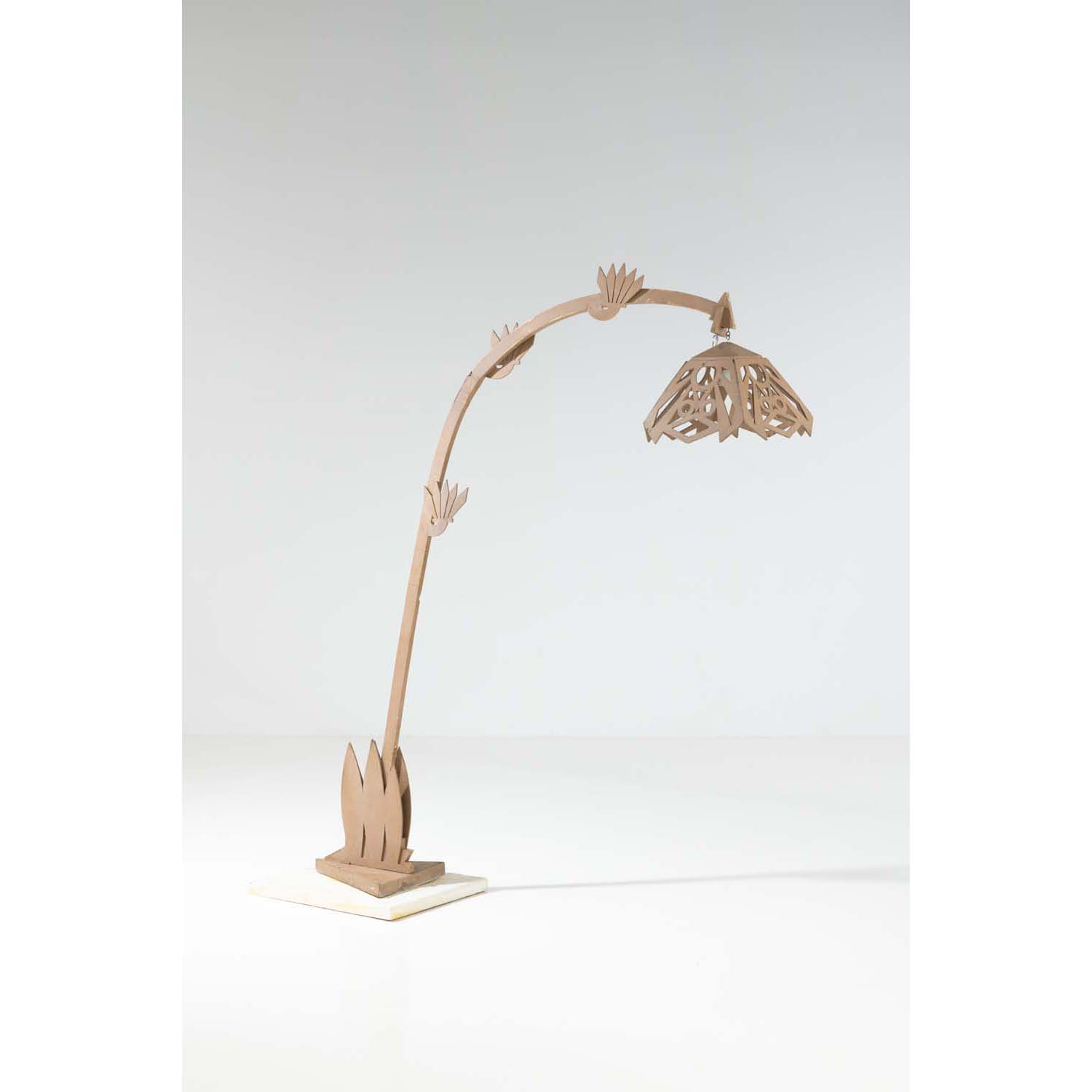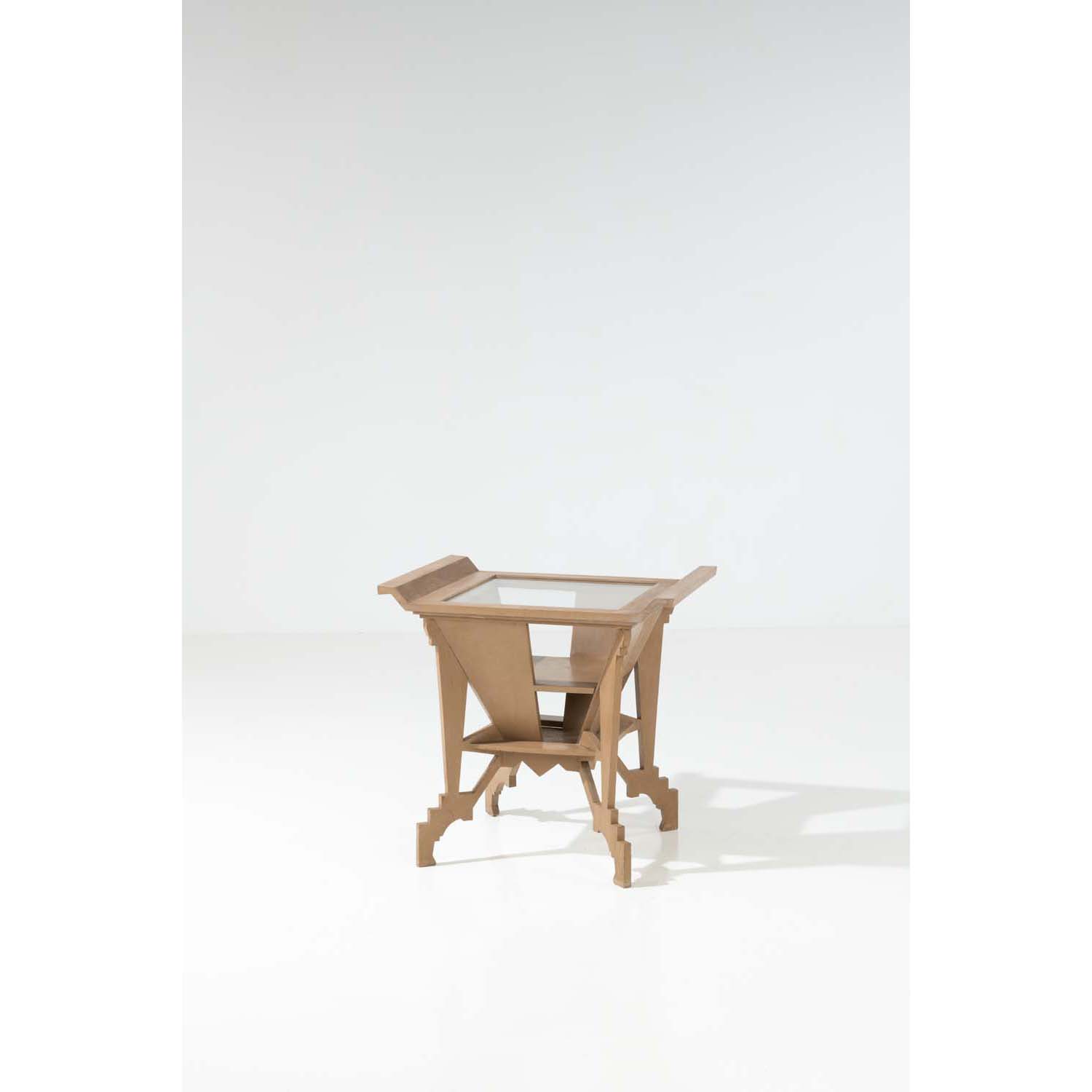The decoration of a house, a restaurant, a hotel, must have its own character. I mean that each room should have a personality that matches what is done there. It seems to me that art finds a worthy task in this way. Art intimately enters life, into our attitudes, into our needs. It seems to me that it is a worthy task to introduce into Life a great refinement, a new Italian elegance, hygiene, well-being, cheerfulness, and optimism.
ARNALDO GINNA, FUTURIST - Excerpt from L’Italia Futurista, year 1, no. 12, Florence, December 15, 1916
Arnaldo Ginna's contribution fits well into this context and documents how, after the drafting of the manifesto Ricostruzione futurista dell’universo (Futurist Reconstruction of the Universe), signed by Balla and Depero, not without the influences of Marinetti, Prampolini, and other protagonists of the post-Boccioni period, published on March 11, 1915, the extension of Futurist aesthetics to the dimension of daily life took on a global character, invading and appropriating all aspects and places of everyday life. The plurality of interventions that concerned the functional and decorative dimension of living did not exclude the field of furniture and interior decoration in its vitalist-creative evolution. Many experiences carried out at the time must be considered today as true precursors of a renewed image of daily life, the first beginnings of a new discipline that would later be called design. The adherence of many interpreters, from Padua to Palermo, from Turin, Florence, and Rome, who brought to life a multifaceted production always close to the artisanal craftsmanship of manufacturing, was particularly lively.
Futurist Italian production (early 20th c.)
Floor lamp
Estimate: 1500 / 2000 €
The first manifesto dedicated to the theme of furniture, Il mobilio futurista. I mobili a sorpresa parlanti e paroliberi (Futurist Furniture. Surprise Talking and Paroliberi Furniture), was published in Rome in 1920, but the Neapolitan poet Francesco Cangiullo had already written it in 1916.
“I do not understand how people of the so-called intellectual world can still live in apartments furnished in the unhygienic Rococo style or surrounded by the unpleasant gildings of the Louis style [...] it is the environment that shapes the man,” declared Balla in 1920. He was one of the first and most active interpreters of the new stylistic movements and, in the case of furniture, he brought to life original constructive results, for example by alternating sinuous lines with the geometric asymmetry of profiles, the abstract dynamism of volumes with the exaltation of colors, always in accordance with the theorized principles.
Then there were what are called Case d’Arte Futuriste (Futurist Art Houses), born all over Italy, to interpret in a more organic and fertile way the poetics of the Reconstruction. In addition to being the artist’s home, the Case d’Arte were lively, bubbling workshops frequented by young artistic personalities, always open to novelty. It was there that the much sought-after fusion between art and life was realized and exalted. These new production realities, although still in a purely artisanal dimension, gave birth to a multitude of new manufactured products, while cultivating the hope of a soon affirmation in the field of mass industrial production.
Chronologically, the Casa d’Arte Bragaglia, on Via Condotti in Rome, was the first to be inaugurated, on October 4, 1918, by Anton Giulio Bragaglia with an exhibition dedicated to Giacomo Balla. Of course, the latter also dedicated himself to the design and manufacture of furniture in his home-studio, first located on Via Porpora, then, from 1929, on Via Oslavia, also in Rome. The house itself can be considered a total work of art, almost the manifesto of the new decorative turn of Futurism.
Futurist Italian production (early 20th c.)
Sofa
Estimate: 2500 / 3500 €
The Casa d’Arte of Fortunato Depero, definitively established in Rovereto in 1919, was undoubtedly the most inclined to mass production. An important element of the success of his workshop was the promotional skill of the artist, who personally engaged in advertising ante litteram, thus achieving considerable recognition.
Also in Rome, between 1918 and 1921, the Casa d’Arte Italiana (Italian Art House), established by Enrico Prampolini and the critic Mario Recchi, was active as a place for the diffusion and exhibition of avant-garde art. Prampolini personally designed all the decoration of the Casa d’Arte, keeping an eye on the Futurist experiences and the other on those of Constructivism. It was also in Rome that Ugo Giannattasio organized a Casa d’Arte specializing in furniture and scenography, while in Florence, at the beginning of the 1910s, the Thayaht workshop was active.
In Bologna, the Casa d’Arte Tato, also known as Casa dei futuristi (House of the Futurists), frequented by artists from all schools, thrived. In Palermo, it was the initiative and organizational capacity of Pippo Rizzo that modernized the Sicilian environment with the opening in 1925 of the Casa d’Arte Pippo Rizzo - Arti Decorative Futuriste (Pippo Rizzo Art House - Futurist Decorative Arts). The production of the Casa d’Arte, during its years of activity, from 1925 to 1930, was vast and varied; the artist distinguished himself in the creation of "Futurist salons," bedrooms, display cases, decorative panels, drawings, advertising posters, light advertisements, as well as ceramics, lamps, tapestries, parasols, bedspreads, lacquered and silvered wooden ornaments. Also in Palermo, Vittorio and Gigia Corona encouraged the artisanal production of Futurist objects. As did Fedele Azari in Milan and Nicolaj Diulgheroff in Turin.
Futurist Italian production (early 20th c.)
Table
Estimate: 2500 / 3500 €
In short, a plurality of ideas, concrete projects, and multifaceted manufactured products certainly make it complex to attribute such an evocative and original collection of furniture as the one presented here. The jagged profiles and asymmetrical volumes of the furniture suggest a lineage tracing back to Depero, but the absence of signatures and well-defined marks prevents a more precise attribution. This does not shake the motivation of those who, appreciating the extraordinary research and results of this period, can seize the opportunity of such a proposal.
Riccardo Zelatore




